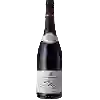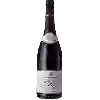The Winery Paul Jaboulet Aîné of Rhone Valley

The Winery Paul Jaboulet Aîné is one of the world's great estates. It offers 81 wines for sale in of Rhone Valley to come and discover on site or to buy online.
The Paul Jaboulet Aîné Estate is a renowned vineyard situated in the famous Côtes du Rhône wine region in France. Established for over 200 years, the estate spans over 230 hectares with vines surrounding the most beautiful villages in the region, including Tain l'Hermitage and Gervans. The red granite soil, rich in minerals, is one of the main characteristics of the terroir, offering the perfect terrain for the vines. The Paul Jaboulet Aîné Estate produces a wide variety of wines, but its fame resides in its red wines made from Grenache, Syrah, Mourvèdre, and Viognier grapes. Their expertise is the key to their success: meticulous work with the land and vines, selective grape harvesting, and vinification methods. They also follow environmentally friendly practices, such as the use of organic fertilizers and low-consumption vehicles. The Paul Jaboulet Aîné Estate offers a wide range of wines for all tastes, ranging from meaty and spicy wines to light and fruity ones. Their most famous wine is the “Hermitage” which is known for its intense notes of berries, spices, and licorice. Other Grand Crus such as the “La Chapelle” and "LaChavelle" wines offer more complex and subtle flavors. Their wines are served in the most renowned restaurants and bars worldwide and represent the pinnacle of French viticulture. Through time and its successes, the Paul Jaboulet Aîné Estate has maintained respect for the land it cultivates and offers high-quality wines that are a real pleasure for wine enthusiasts.



































































